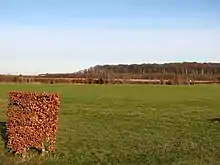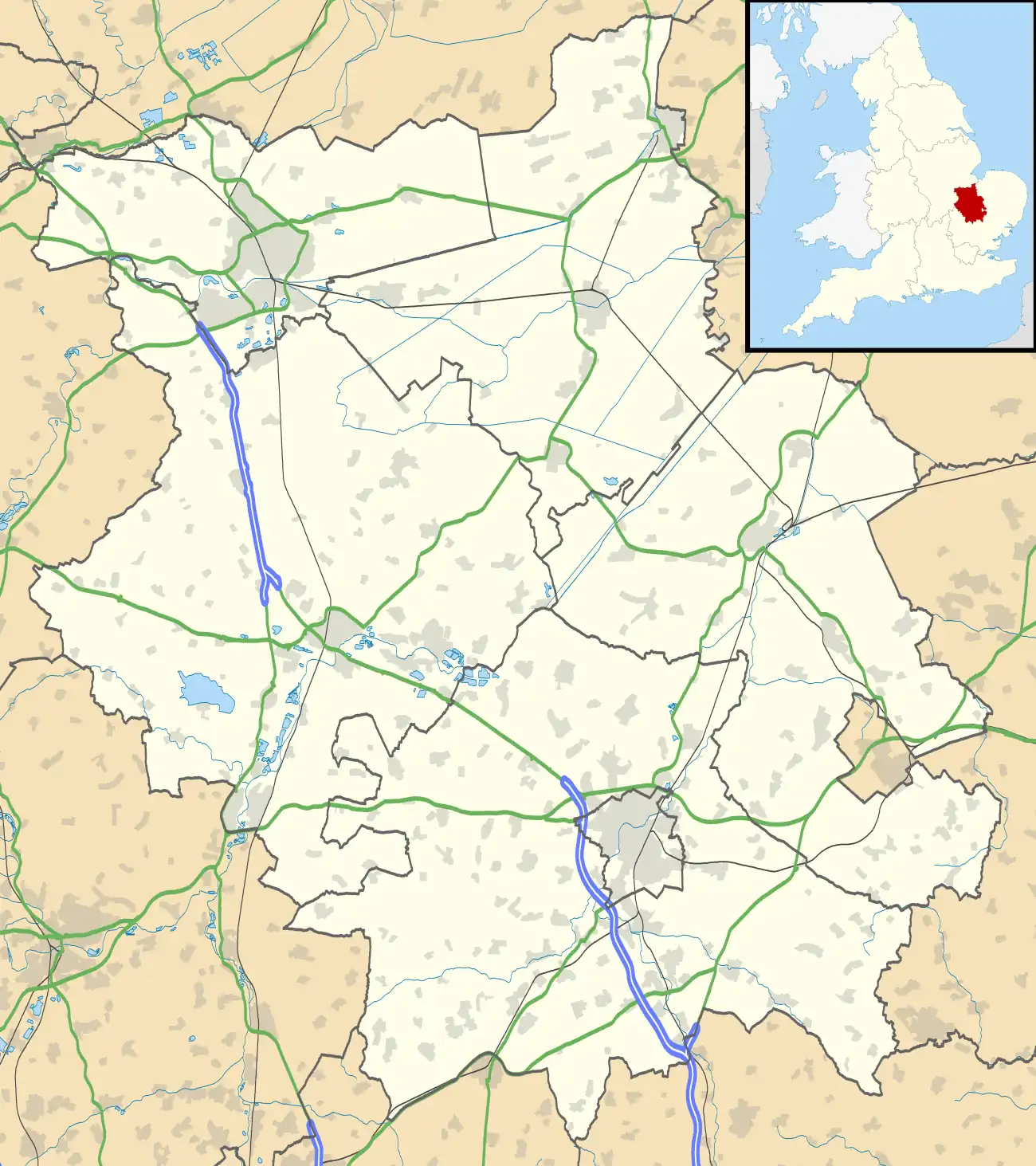 | |
| Club information | |
|---|---|
 | |
| Coordinates | 52°9′54″N 0°10′50″E / 52.16500°N 0.18056°E |
| Location | Shelford Bottom, Cambridgeshire, England |
| Established | October 1901 |
| Total holes | 36 |
Gog Magog Golf Club is a golf club, located in Shelford Bottom, Cambridgeshire, England. It is located about 4 miles south of Cambridge.
History
The Club was established in October 1901, founded by John Bascombe Lock.[1][2] The course was designed by W. Duncan. Herbert Strong, the professional from Sandwich, would start his golf career here in 1902.[3] The Wright Cup was held at the Gog Magog Golf Club in the early 1970s.[4] Howard Florey was a player here while at Cambridge.[5] The golf course was historically "reserved for graduate members of the University of Cambridge".[5]
Wandlebury course
A second course was established in 1999, the Wandlebury, which is also voted the second best golf course in the county after the old course. In 2007, the Wandlebury course was used for the regional qualifiers to the Open Championship. On the hill above the course is an Iron Age plateau fort.[6]
Tournaments hosted
The Gog Magog Club is also well known for holding the annual Lagonda Trophy, which has been won by many big golfing names such as Luke Donald and Lee Westwood.
Site of Special Scientific Interest
Gog Magog Golf Course is a biological Site of Special Scientific Interest.[7]
References
- ↑ University of Cambridge (1951). Alumni Cantabrigienses: Abbas-Cutts. vol. II. Dabbs-Juxton. vol. III. Kaile-Ryves. vol. IV. Saal-Zuinglius. University Press. p. 195. Retrieved 19 July 2012.
- ↑ The Golfing annual. H. Cox. 1906. p. 201. Retrieved 19 July 2012.
- ↑ "Golf – J. Sherlock v H. Strong". The Times. 12 November 1902. p. 12.
- ↑ Law Society (Great Britain) (1974). The Law Society's gazette. The Society. p. 599. Retrieved 19 July 2012.
- 1 2 Williams, Trevor Illtyd (1984). Howard Florey, penicillin and after. Oxford University Press. p. 20. ISBN 978-0-19-858173-4. Retrieved 19 July 2012.
- ↑ Dyer, James (4 March 2008). Discovering Prehistoric England. Osprey Publishing. p. 24. ISBN 978-0-7478-0507-6. Retrieved 19 July 2012.
- ↑ "Gog Magog Golf Course citation" (PDF). Sites of Special Scientific Interest. Natural England. Retrieved 6 December 2016.